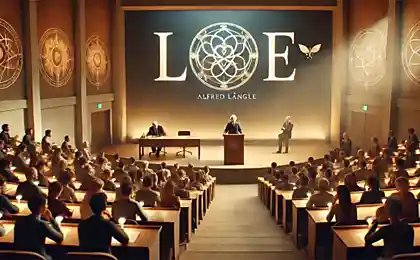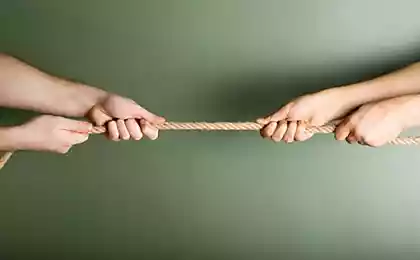184
How to determine what you really want from a relationship with a girl
Awareness of your needs and desires in a relationship will help you not to deceive yourself and not take time from a girl.

In the world of modern relationships, many men are trapped in their own unconscious desires. They enter relationships driven by social expectations, impulses, or fear of loneliness, but rarely ask the fundamental question: What do I really want out of the relationship?
Psychologists call this phenomenon emotional illiteracy. Research shows that more than 60% of people fail to articulate their true needs in a romantic relationship, leading to frustration, conflict and painful breakups.
Why we don't know what we want
The roots of the problem lie deeper than it may seem at first glance. From childhood, we are taught to live up to certain social roles and expectations. Men are often raised to be “strong,” “independent,” and “not emotional.” These cultural imperatives create an internal conflict between true needs and socially acceptable behavior.
It's important to understand: Failure to recognize your true desires is not a personal flaw. It is the result of a complex interplay of social, psychological and cultural factors that shape our personality from an early age.
The phenomenon of projection creates additional complexity. We often project on our partner our unrealized aspects of personality or try to compensate for our own psychological gaps through relationships. This can lead to codependent relationships where the boundaries between partners are blurred.
Self-Awareness Techniques: The Path to Mindfulness

Emotional mapping method
Create a detailed map of your emotional reactions in different situations. For two weeks, write down:
- Which relationships make you most happy?
- What makes you feel anxious or uncomfortable
- When you feel the most intimacy with your partner
- Things that make you want to distance yourself
The Perfect Day Technique
Imagine the perfect day in a relationship in five years. Describe it in as much detail as possible: where you wake up, how you spend time, what you talk about, what emotions you feel. This visualization will help identify your deepest needs for intimacy, autonomy, collaboration, and emotional support.
Practical advice: Record your visualizations. Written fixation of thoughts activates additional neural connections and promotes deeper awareness.
Relationship typology: understanding your style
Psychology identifies several basic types of attachment that form in early childhood and affect our adult relationships. Understanding your type of attachment can dramatically change the way you choose a partner and build relationships.
Secure attachment
People with a reliable type of attachment feel comfortable both intimacy and independence. They are able to openly express their needs and maintain healthy boundaries. If this is your type, you are most likely looking for an equal, mutually supportive relationship.
Anxious attachment
It is characterized by an increased need for intimacy and fear of being abandoned. People with an anxious type often overestimate the importance of a relationship and may lose themselves in a partner. If you recognize yourself in this description, it is important to work on developing self-sufficiency.
Avoiding attachment
It manifests itself in discomfort from too close relationships and the desire for emotional distance. Such people value independence over intimacy. Understanding this feature will help you find a partner who respects the need for space.

Practical tools for self-knowledge
Wheel of Needs Methodology
Create a pie chart with eight sectors, each representing a key relationship need:
- Emotional Intimacy and Support
- Physical intimacy and sexuality
- Intellectual compatibility
- Overall goals and future plans
- Personal space and autonomy
- Shared hobbies and interests
- Financial stability and security
- Spiritual and Value Compatibility
Key insight: There is no “right” allocation of priorities. It’s important to honestly acknowledge your needs, even if they don’t meet social expectations.
Analysis of past relationships
Do a retrospective analysis of your previous relationship. What attracted you to partners? What moments brought the most satisfaction? What caused the conflicts? This analysis will help you identify repetitive patterns and understand what works for you and what doesn’t.
Knowledge integration and application
Having become clear about your needs and desires, it is important to learn how to integrate this knowledge into real life. It takes courage to be honest with yourself and potential partners.
Honest communication
Learn to articulate your needs without aggression or apologies. Phrases like “It’s important for me to have time for myself” or “I appreciate talking deeply about the future” help set healthy expectations from the start of a relationship.
Gradual disclosure
Do not put all the cards on the table in the first weeks of dating. The gradual disclosure of your needs and boundaries creates a healthy foundation for developing relationships and allows you to evaluate compatibility at different levels.
Remember: Self-knowledge is a process, not a one-off event. Your needs can evolve with age and life experience.
Conclusion: The Path to Authentic Relationships
Understanding your own needs and desires in a relationship not only prevents disappointments and lost time, but also opens the way to deeper, more authentic connections. When you know what you want, you can find a partner who shares your values and complements your personality.
This process of self-discovery takes time, patience, and honesty with oneself. But investing in self-understanding pays off with the quality of future relationships and personal happiness. It’s better to be alone than in a relationship that doesn’t meet your true needs.
Glossary
Emotional illiteracy Inability to recognize, understand and adequately express their emotions and feelings.
projection A psychological defense mechanism in which a person attributes to others their own unconscious thoughts, feelings, or motives.
Codependency A pathological condition characterized by a deep absorption in the life of another person to the detriment of their own needs.
Cognitive behavioral therapy A psychotherapeutic approach aimed at changing destructive thoughts and behavioral patterns.
Type of attachment A stable pattern of emotional and behavioral responses in close relationships that develops in early childhood.
Authenticity correspondence of external manifestations of the personality to its inner essence, sincerity in expressing itself.























